Cartier follows the Panthère’s tracks
The limber, intriguing, and feminine feline Panthère is constantly on the prowl within Cartier’s workshops, wild yet gentle, and perfectly at ease with the paradox she creates. She has been exalted by Jeanne Toussaint, Cartier Fine Jewellery director and longtime collaborator of Louis Cartier. The panther’s mark throughout the ages in world fashion is undeniable and multifaceted. At times she appears as we would expect: catlike and nimble, but she can also surprise us by shapeshifting into, albeit domesticated, abstraction. Cartier and the Panthère are one, inseparable. Addressing this paradox for us, here is an interview with Cyrille Vigneron, CEO of Cartier, one of high fashion’s most iconic Maisons.
Jeanne Toussaint, AKA “la Panthère”
We couldn’t possibly retrace the history of the Panthère without mentioning the pivotal role played by Jeanne Toussaint. Toussaint became Cartier Fine Jewellery’s creative director in 1933, a position few women could hold at the time. She was appointed to this position by none other than Louis Cartier himself, which she considered as both a friend and a soulmate.
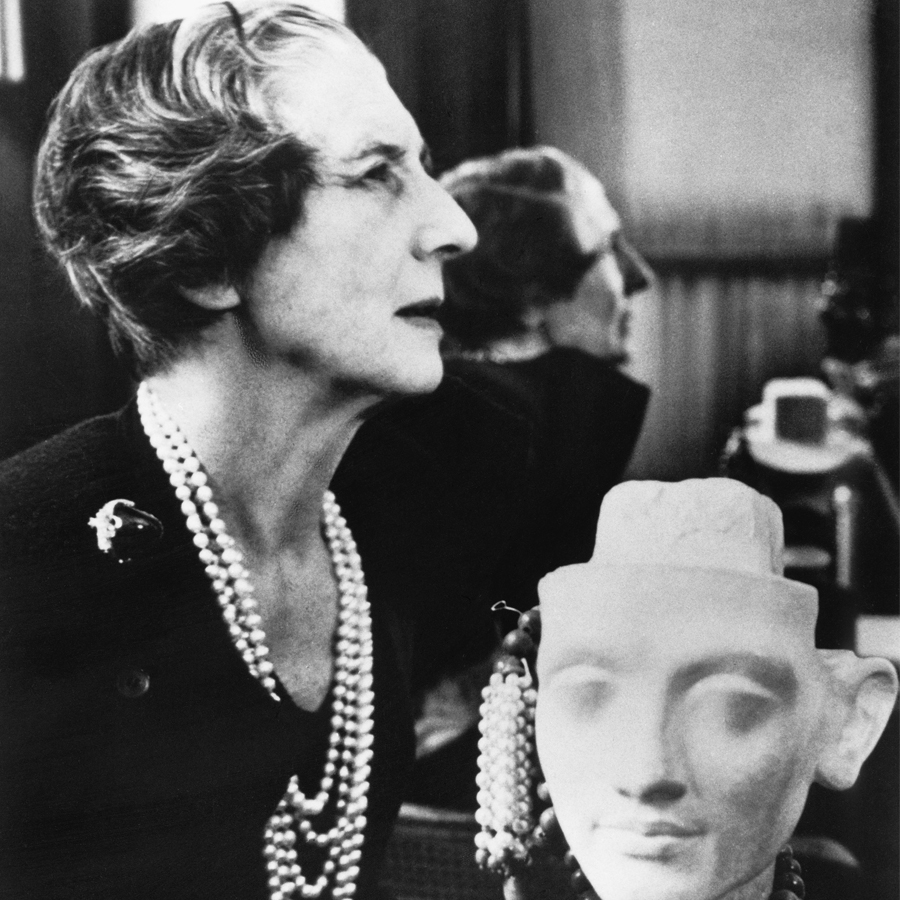
Ever since she set foot in Cartier’s workshops in 1918-1919, she continuously refined her innate creative gift. She perfected her already masterful and witty style, which was considered unparalleled in Paris on the eve of the Roaring Twenties. Her piercing blue stare and her fierce demeanour earned her the moniker of “La Panthère”, or the panther. She paved the way for a different, and now widely held view of modern women: independent, bold, sensuous, audacious, and femme fatale.
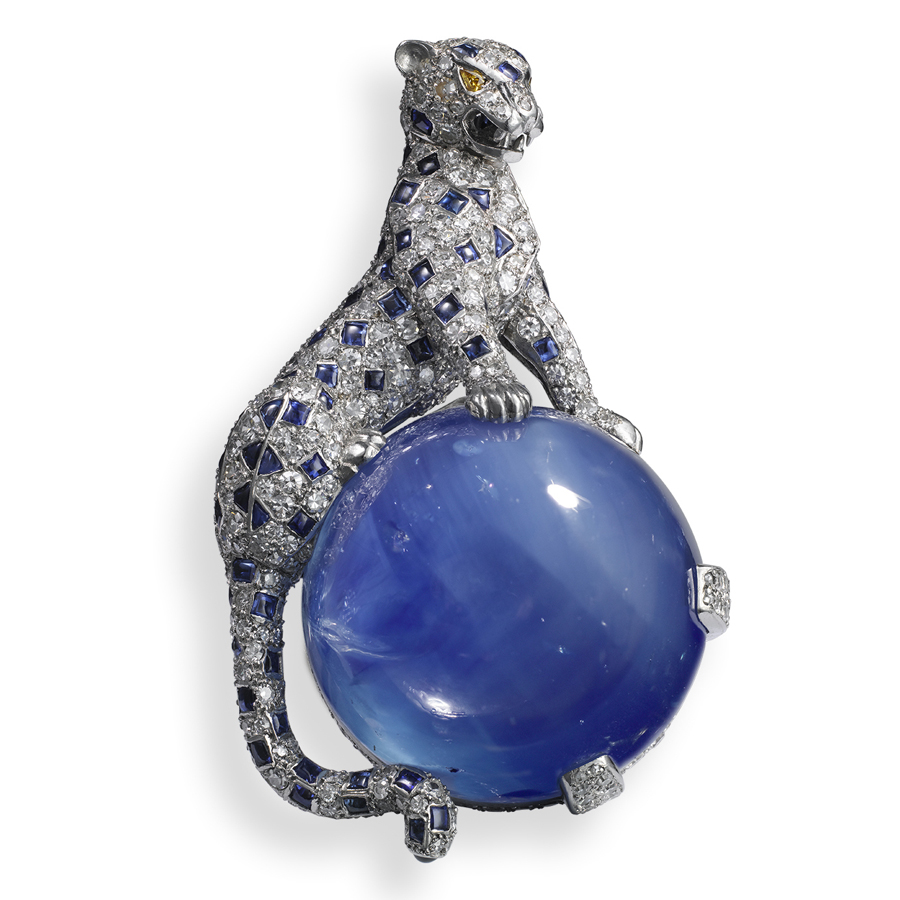
On this brooch, purchase by the Duchess of Windsor, the wild beast sits crouched a top a 152.35 carat cabochon sapphire.
Vincent Wulveryck – Collection Cartier © Cartier.
Toussaint took advantage of the contest created by the illustrator Peter Lemarchand, who joined Cartier in 1927, to take the big cat out of the flat world of two-dimensional space and into the third, breathing new life into it. The brooch-pin from 1949 represents a panther checkered with sapphires, diamonds, and yellow diamonds, nobly standing over a 152.35 carat cabochon sapphire. This formidable technical and aesthetic feat was bespoken for the Duchess of Windsor. Toussaint is the one who took this wild animal out of the jungle and who adorned it with precious stones and gems, turning it into a timeless cultural icon.
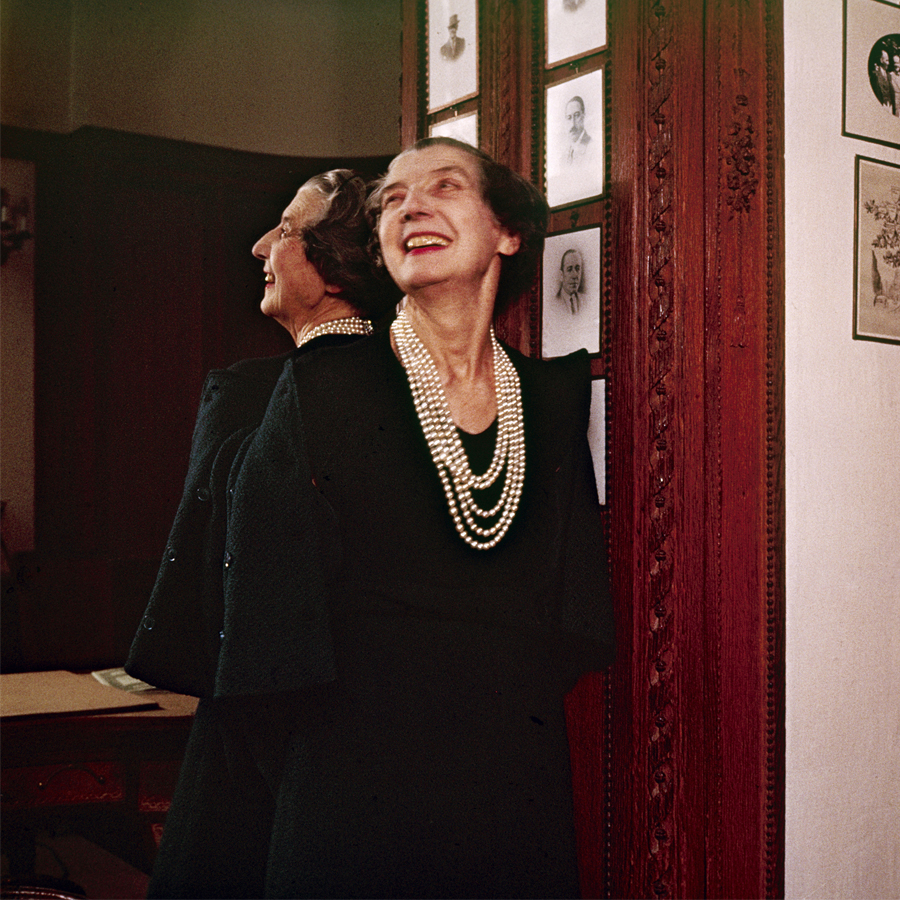
The Panthère’s first steps
The Panthère’s introduction into the Cartier’s collections is culturally situated in the pervasive colonial atmosphere of exoticism of that time. This feline symbolizes power and the romanticized dreams of far-off lands. Slowly but surely, it crept into the world of art, getting into every nook and cranny, and eventually earning a place in these different spheres. As is gained in popularity, the beast become progressively less wild. Cartier managed to tame the great beast, finally domesticating it, and giving it a regal spot among his rich and eclectic menagerie.
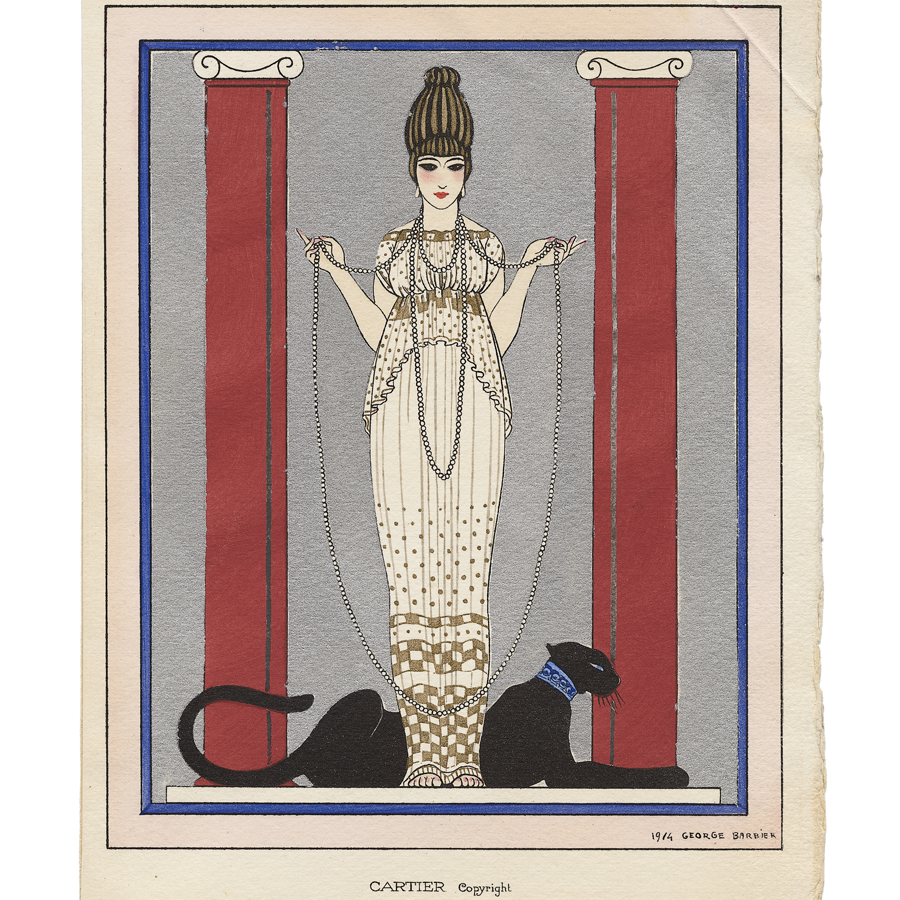
It’s in 1914 that the panther peeks into the frame on an invitation-card commissioned by Cartier to the illustrator George Barbier, a regular collaborator of theatre and music-hall professionals as well as those of the advertising world. This figure of the black panther lady, standing between two ancient pillars was a very fashionable image in the early years of the 20th century.
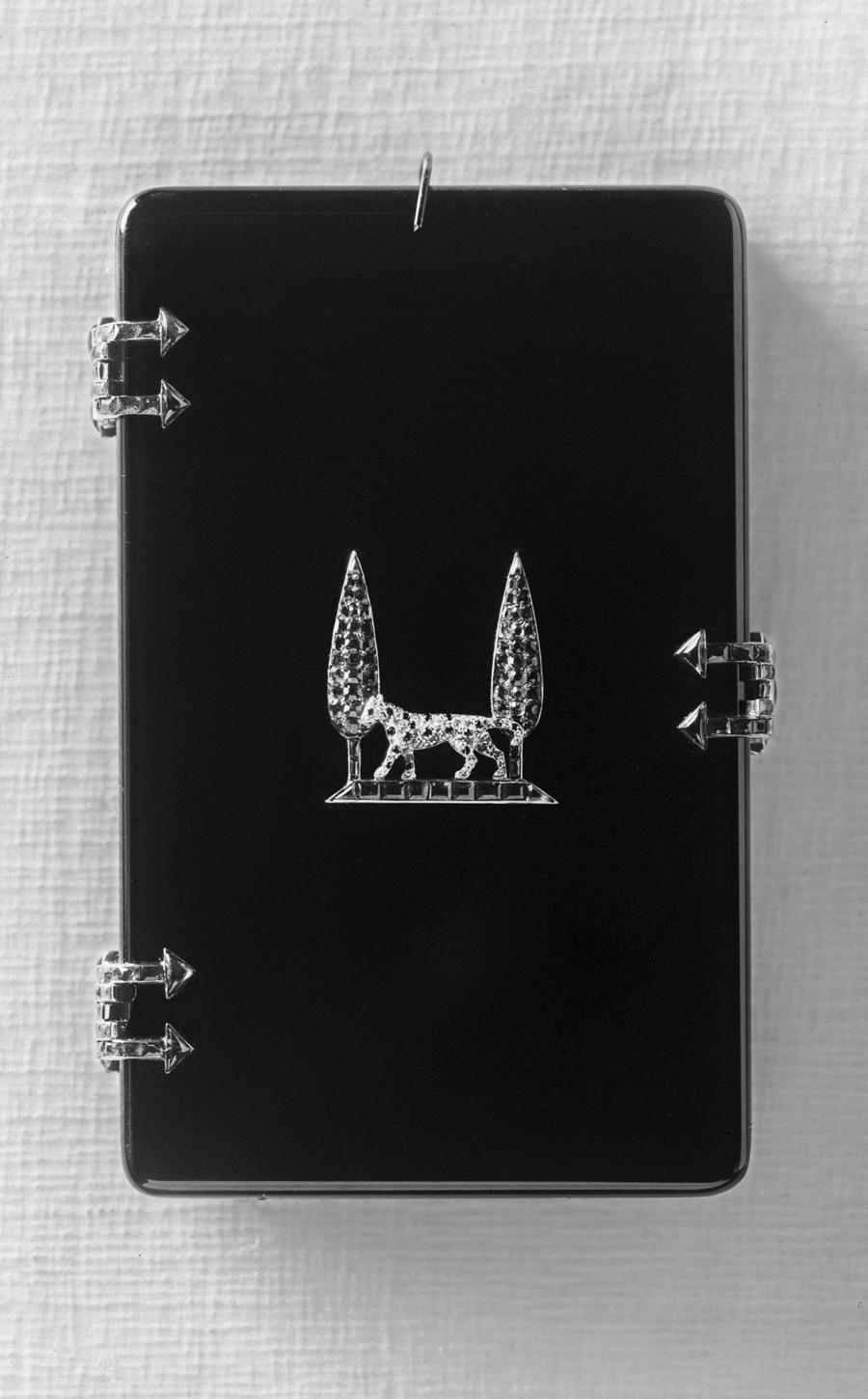
A gift from Louis Cartier to Jeanne Toussaint.
Archives Cartier © Cartier
The leopard-skin pattern makes its grand debut that same year on a diamond and onyx wristwatch mimicking the spots on a leopard’s fur. Set between two cypresses crafted with emeralds and rubies, the panther also appears on a makeup kit from 1917, which was gifted to Toussaint by Louis Cartier. Could it be fate?
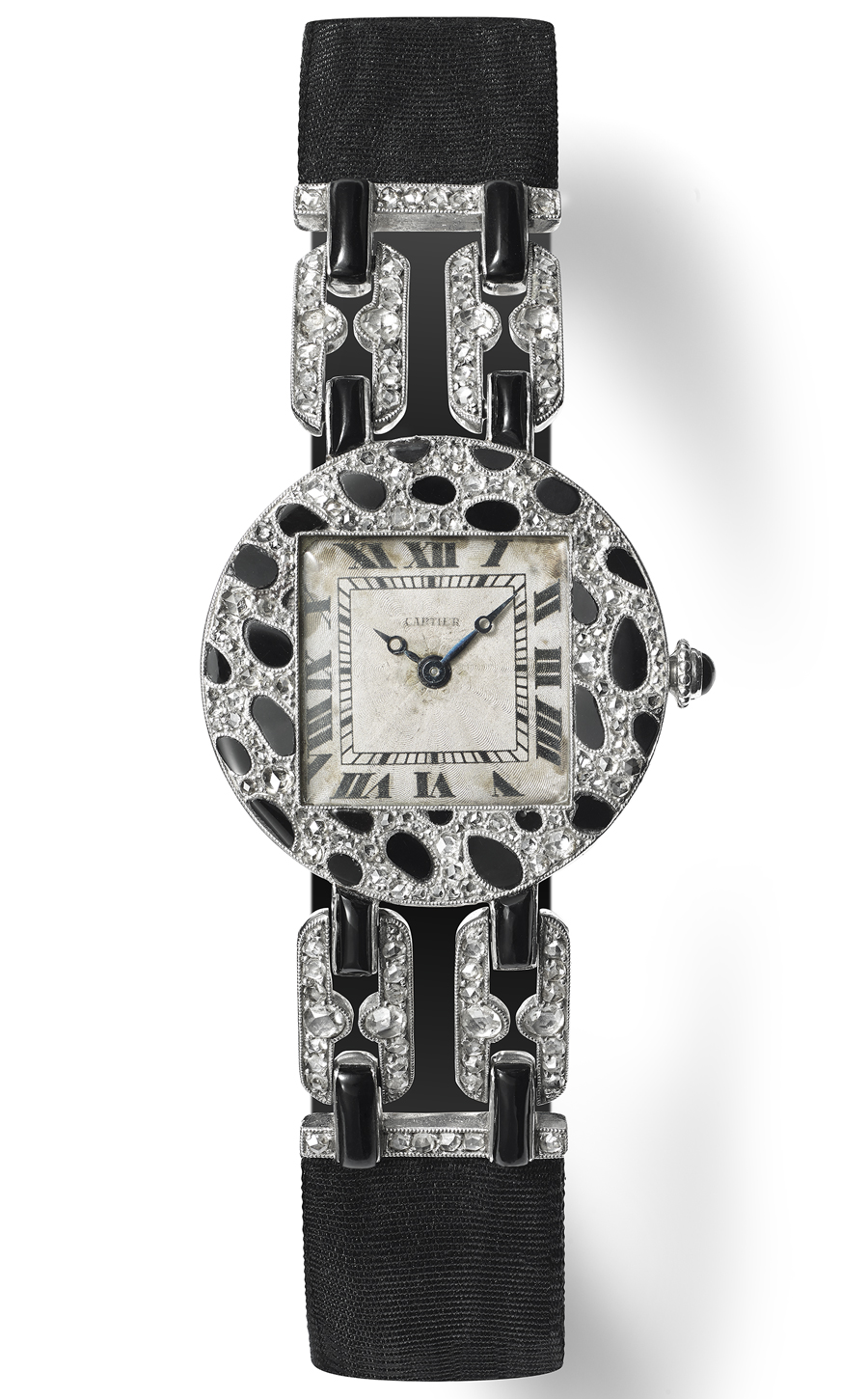
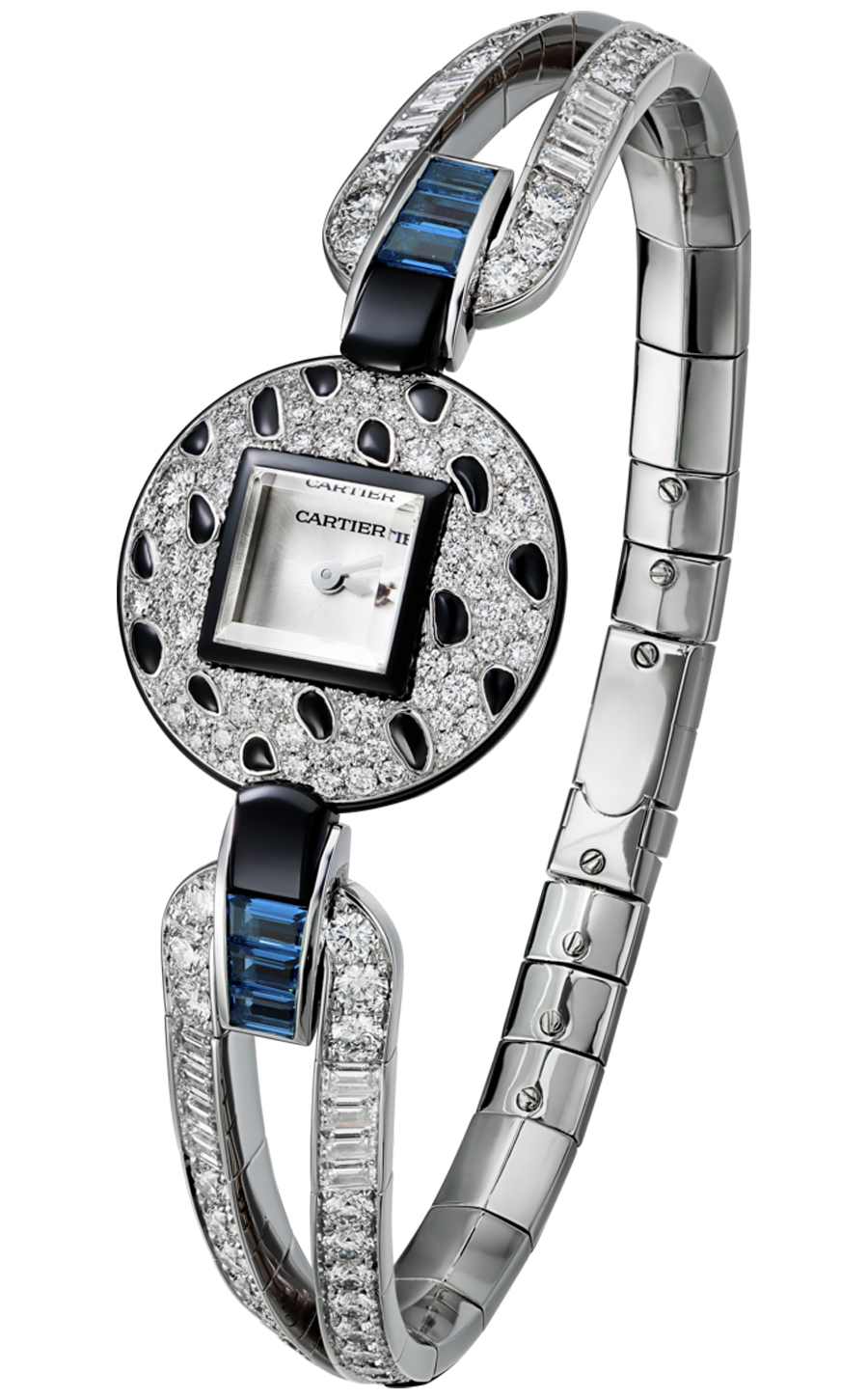
Cartier’s Panthère Pelage Wristwatch: white gold, studded with 179 brilliant-cut diamond, 16 baguette-cut diamonds, 28 onyx, 6 baguette-cut sapphires. A reinterpretation of the original 1914 wristwatch (€240,000).
The native Panthère
In motion
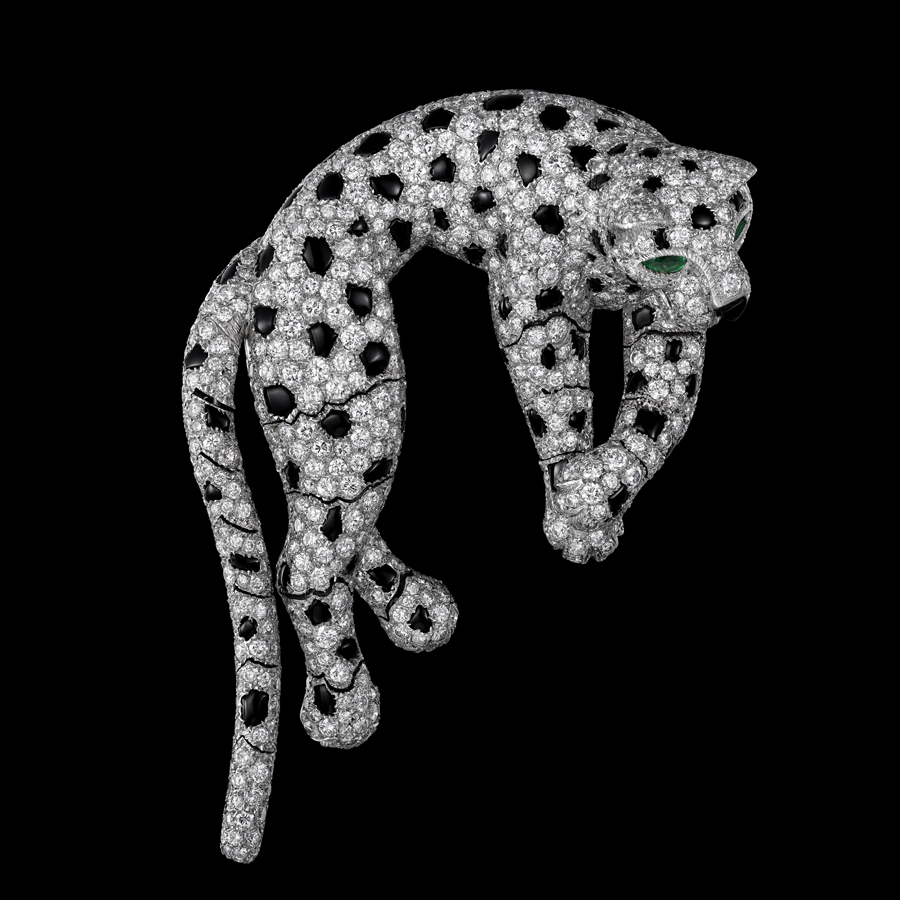
Nils Hermann, Cartier Collection © Cartier.
Motion is a guiding principle within Jeanne Toussaint’s body of work and omnipresent in her artistic endeavours. Even after she was gone, Cartier never stopped being inspired by this, the culmination of her work.
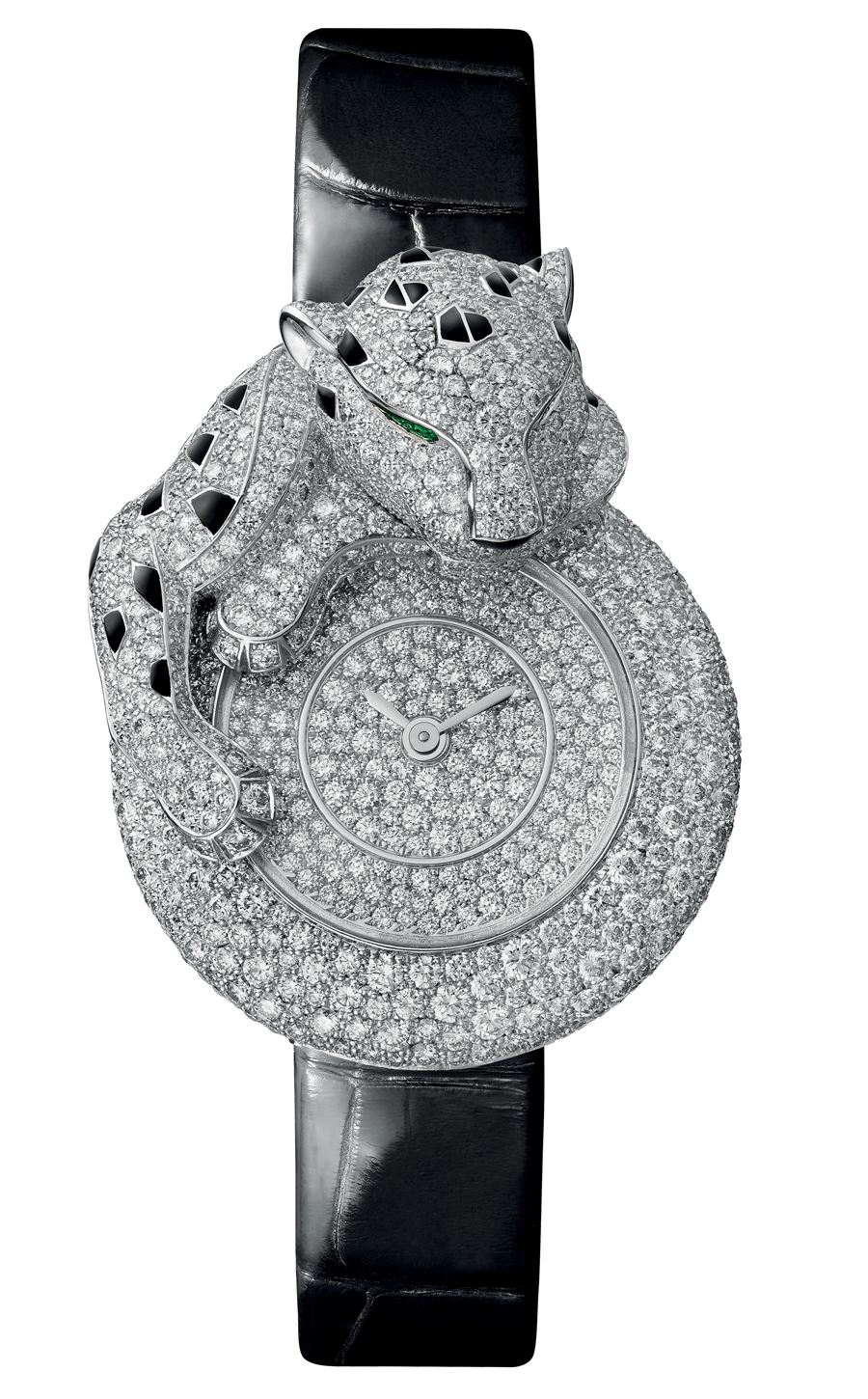
An absolute feat of craftsmanship when Toussaint first created it, and it still amazes us by its sheer volume today. The feline figure masterfully juggles grace, ferociousness, and dazzlement. The realistic design is thanks to the work of a sculptor, who starts by making a wax model, and then created it using 3D rendering.
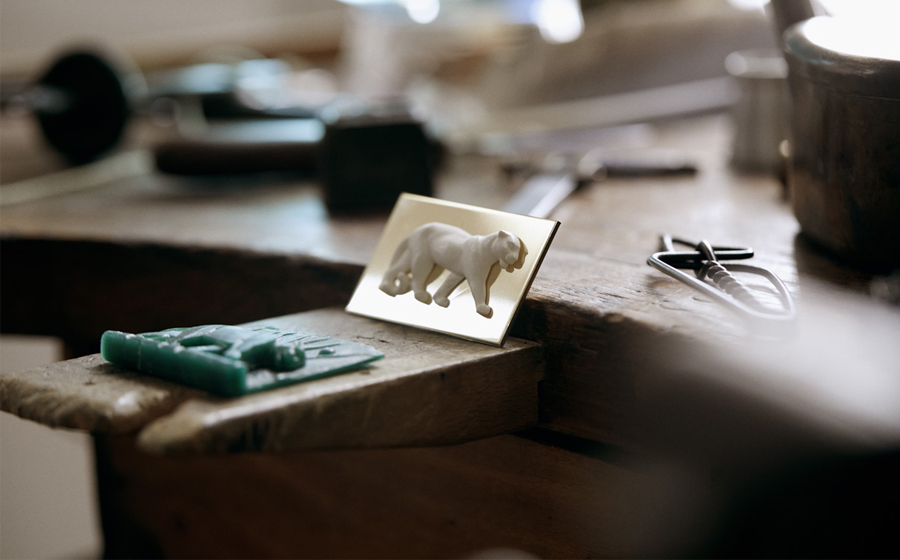
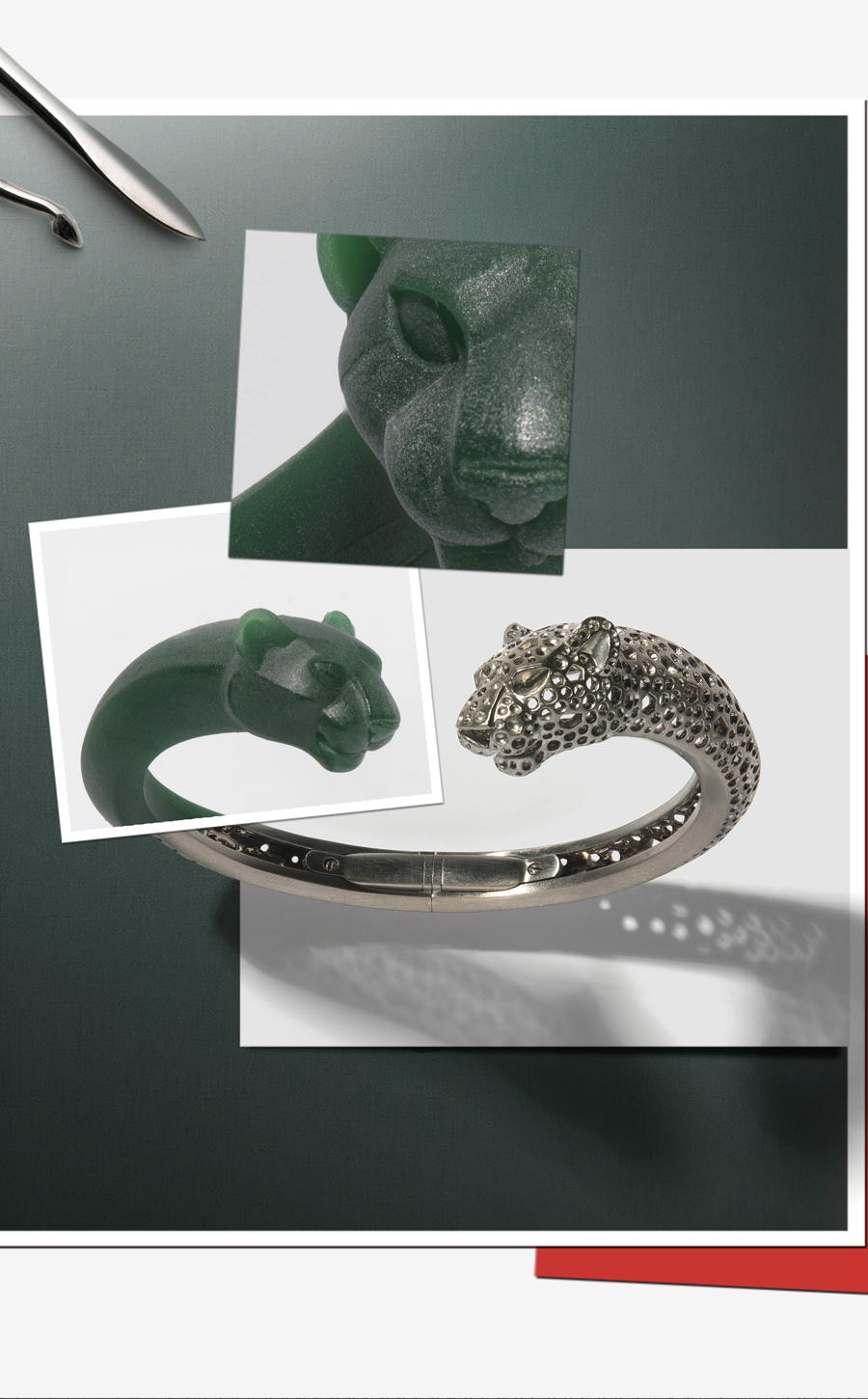
This process enables the artist to represent each detail of the cat’s strong yet delicate frame, its powerful muscles, making it come to life.
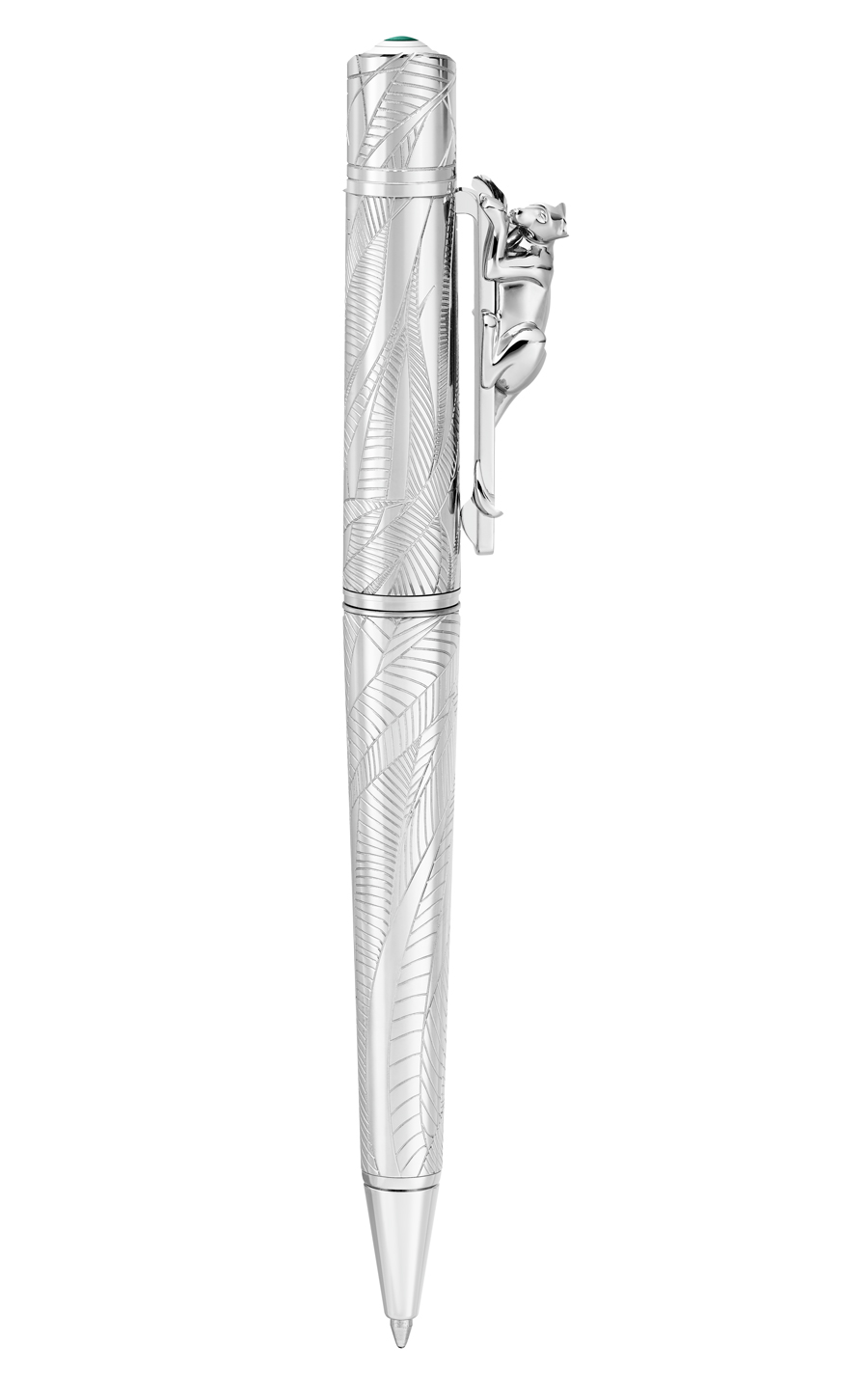
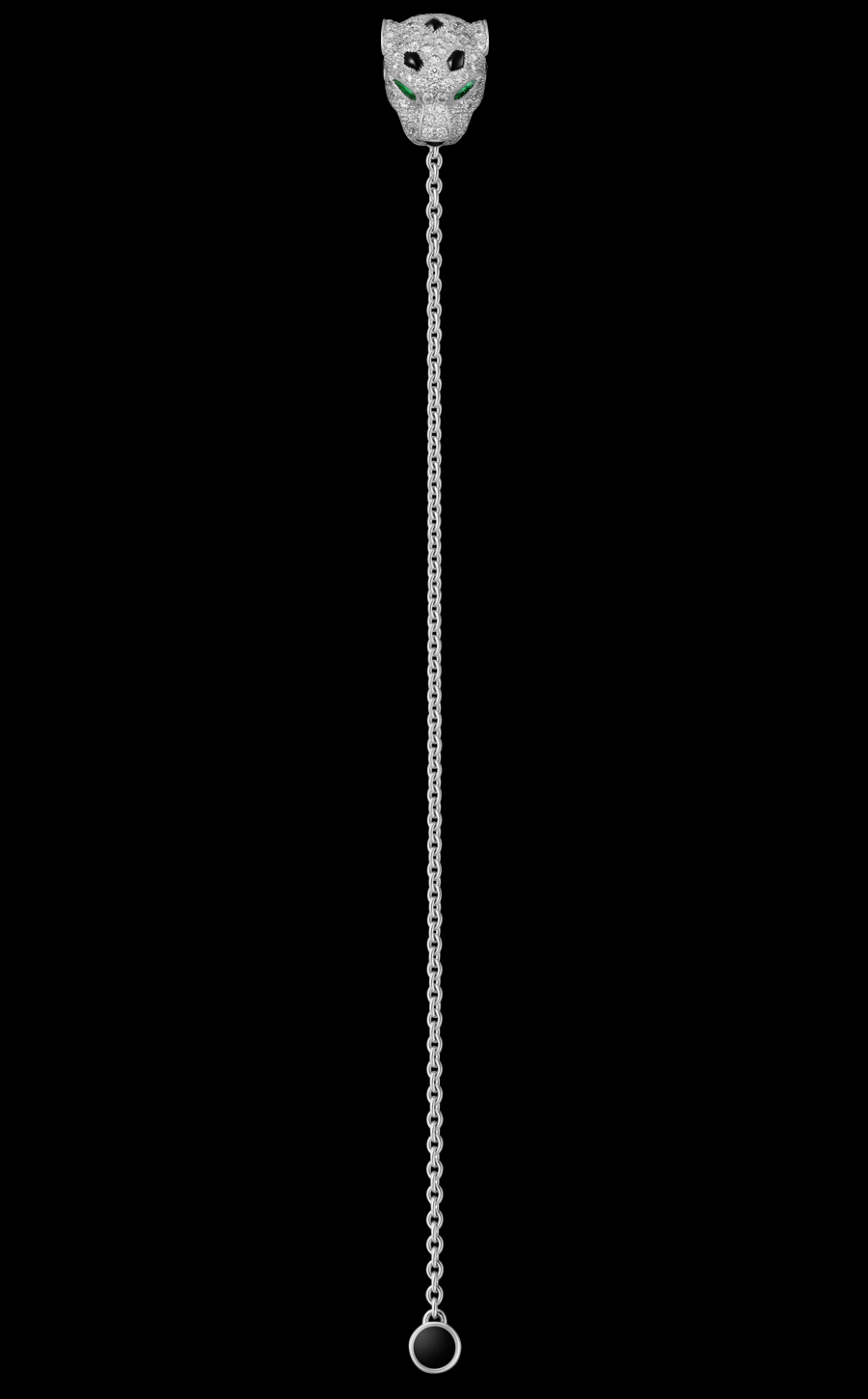
Panthère de Cartier lapel, solid-gold, rhodium plated, and set with 127 diamonds (€22,600).
In her creative prime, Toussaint also added the warmth of yellow gold to her colour pallet, bathing her collections in its warm glow and shimmering splendour. New species of panthers are born and become as a part of Cartier’s permanent collections.
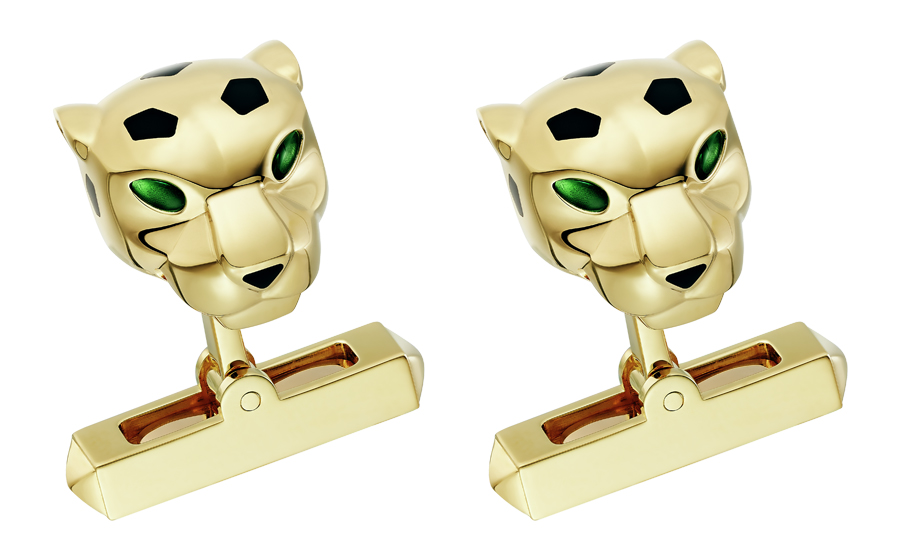
The nimble nature of the feline is beautifully illustrated by this next piece, akin to the Celtic torcs of the Bronze Age. The gold necklace and the bangles can comfily nestle themselves around your neck or wrist thanks to several units that are linked together by two golden blades, attached on either side to springs hidden beneath the panthers’ heads. They gaze at each other with emerald or tsavorite eyes.
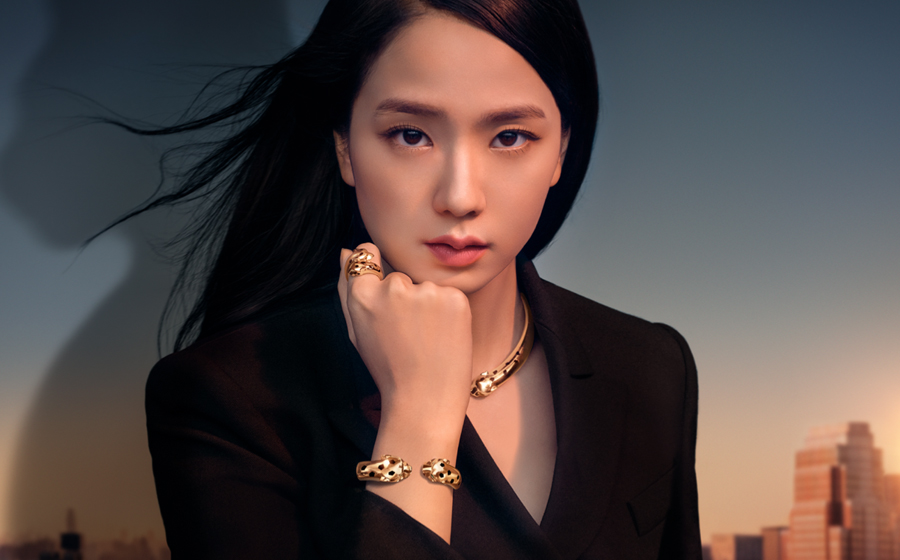
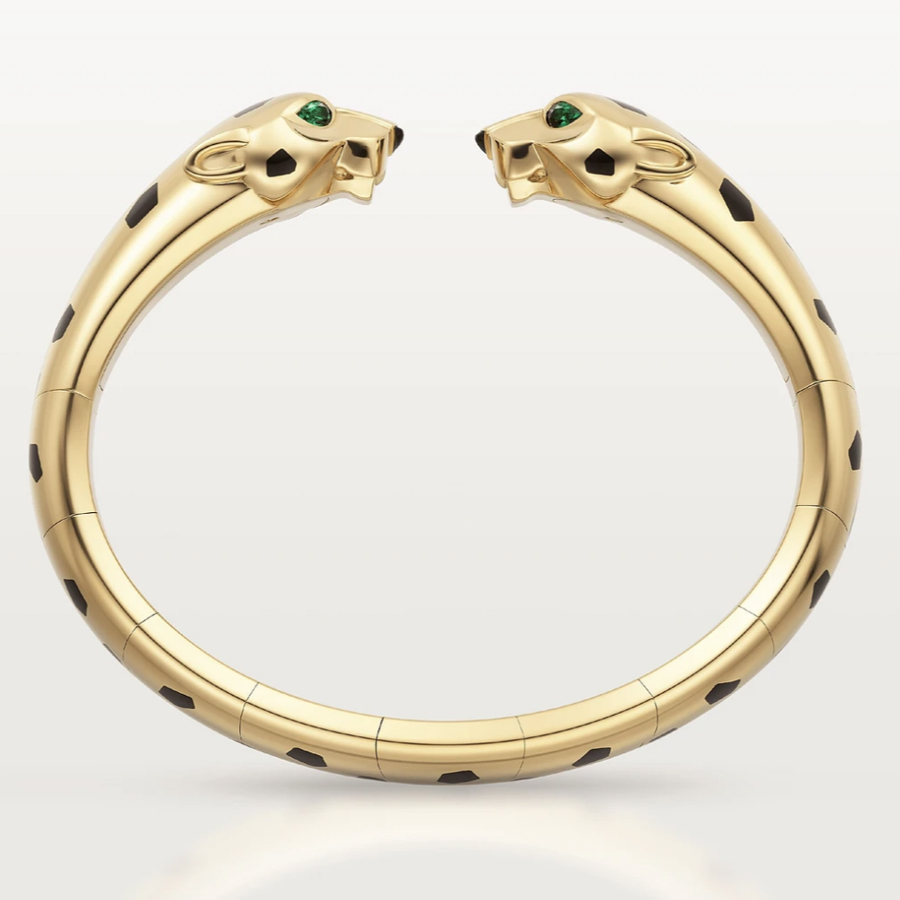
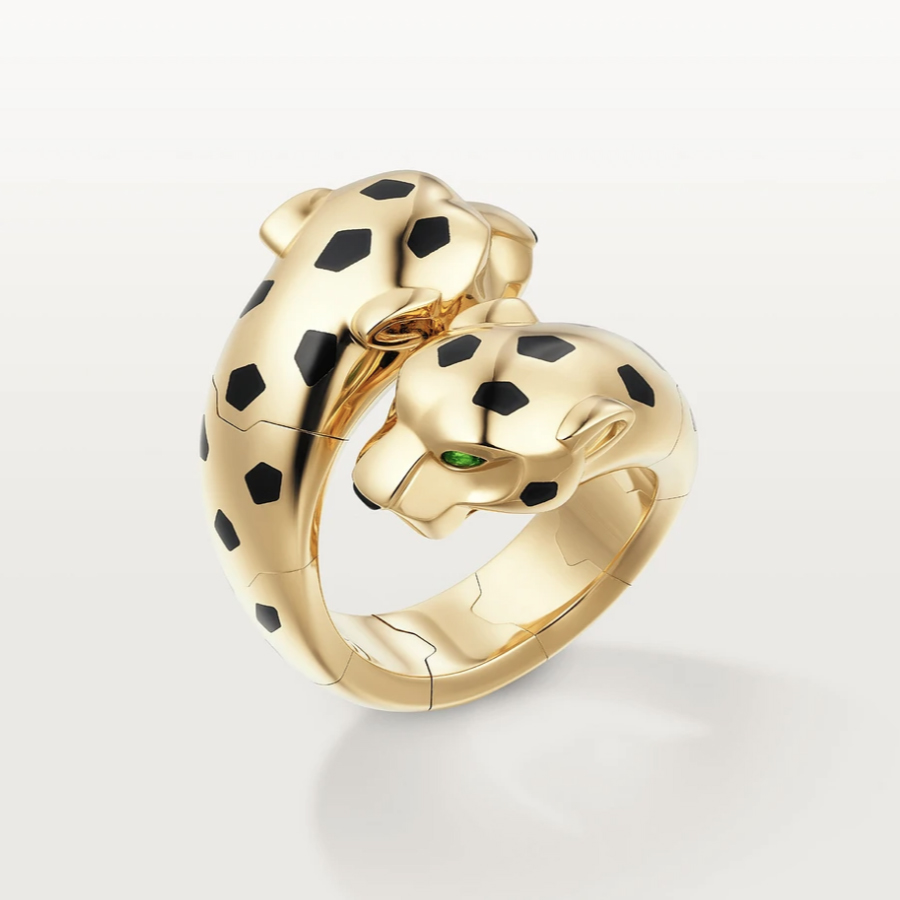
The art of setting
The artisans of high jewellery use a method called “fur setting” to produce the leopard-skin pattern. In this technique, unique to Cartier, each gem is girdled and set with tiny metal grains. The grains are then lengthened and curved, turning them into neat strings, which are meant to represent the feline’s hair. This technique requires the savoir-faire of both a gem-cutter and a setter to create incredibly life-like fur. The spots are created to add a sense of volume to the piece. These spots are larger and densely packed around the visible portion of the surface of the panther and grow sparse and smaller as they move to the hidden side.
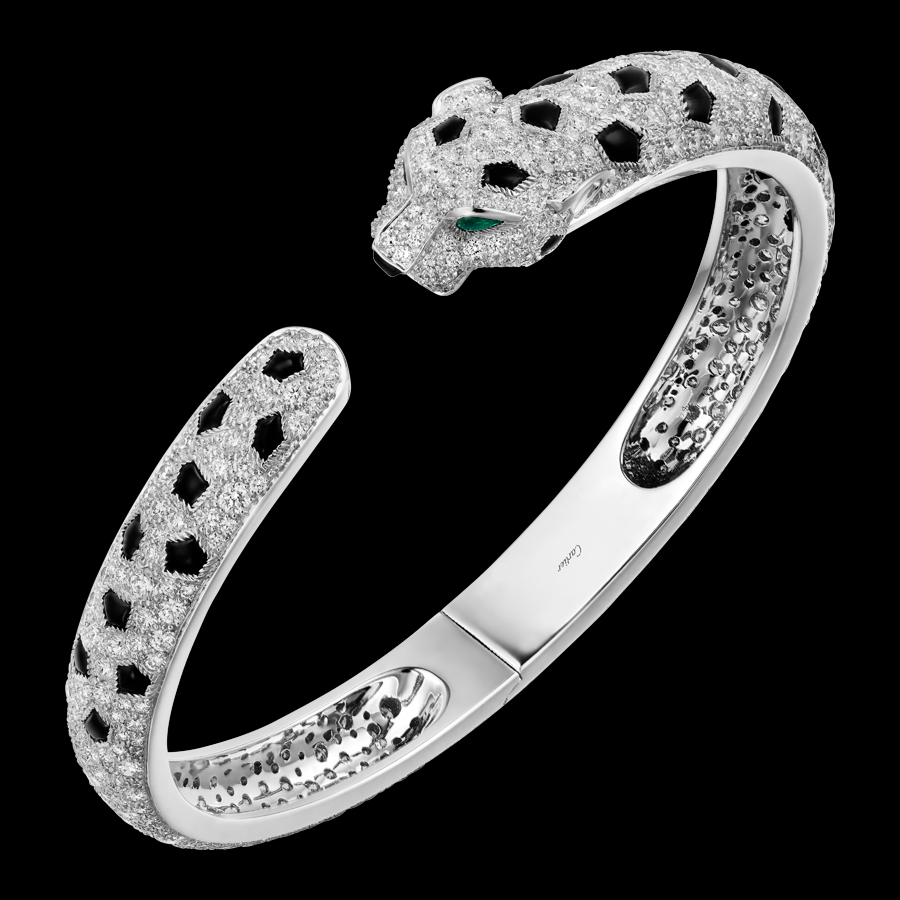
Length: 8.33mm – Width: 4.7mm
Pantherabstraction
Considering how iconic the image of the nimble and twisting panther is in everyone’s mind, no need to represent it in a realistic manner. The very sight of its bestial pattern is a rare treat.
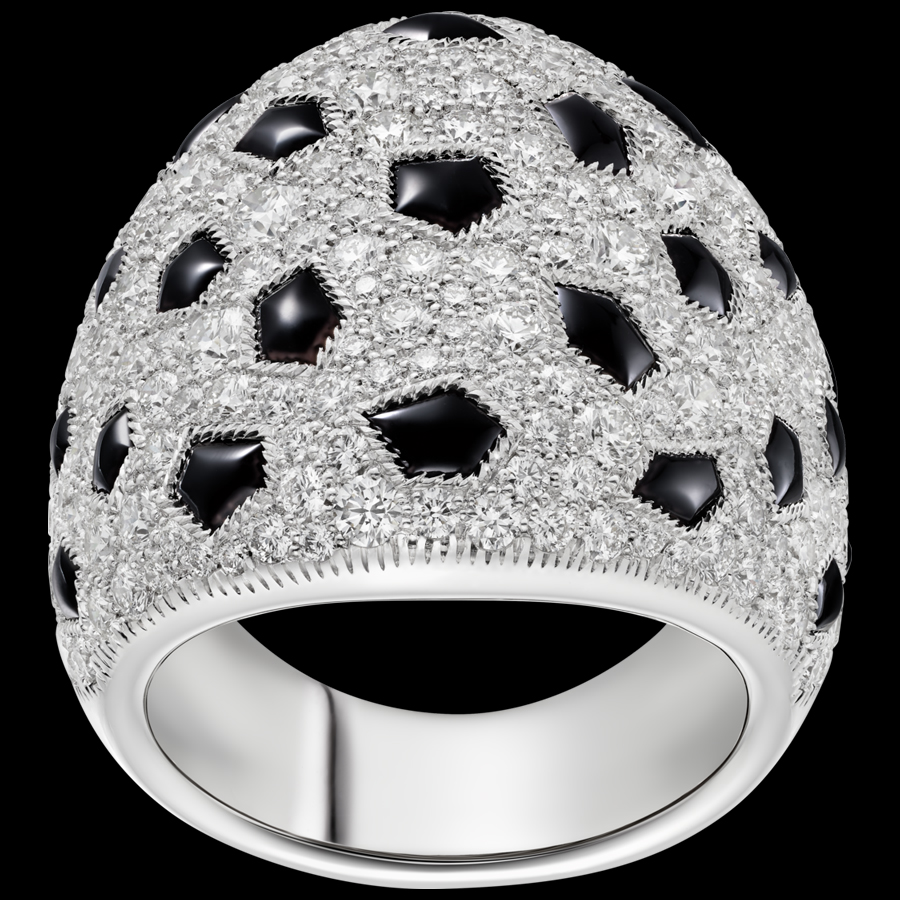
Possibly the most emblematic incarnation of the abstract panther is the very first Panthère de Cartier watch, created in 1983. The striking shape of this jewellery watch is immediately recognizable with its golden and rounded watch casing.
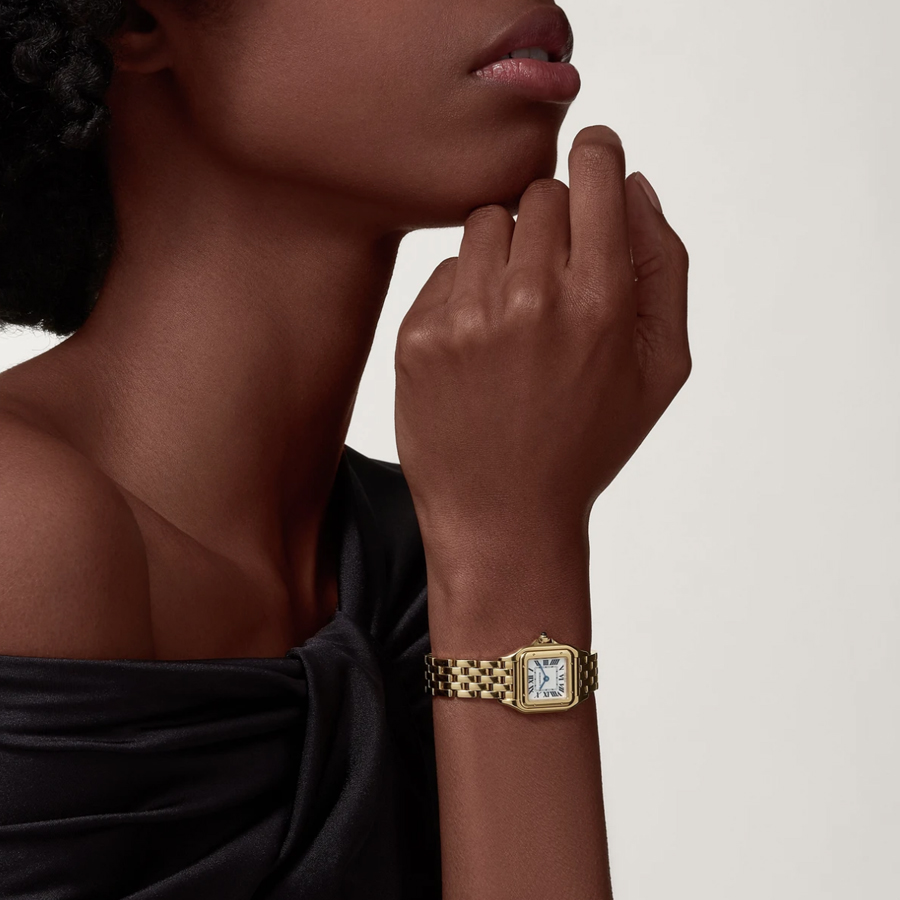
The bracelet is comprised of rounded and polished links, giving it incredible flexibility, echoing the delicate and meandering motion of the panther. All kinds of celebrities in the 1980s were head over heels for this watch, leading to its status as best-seller out of all Cartier’s collections.
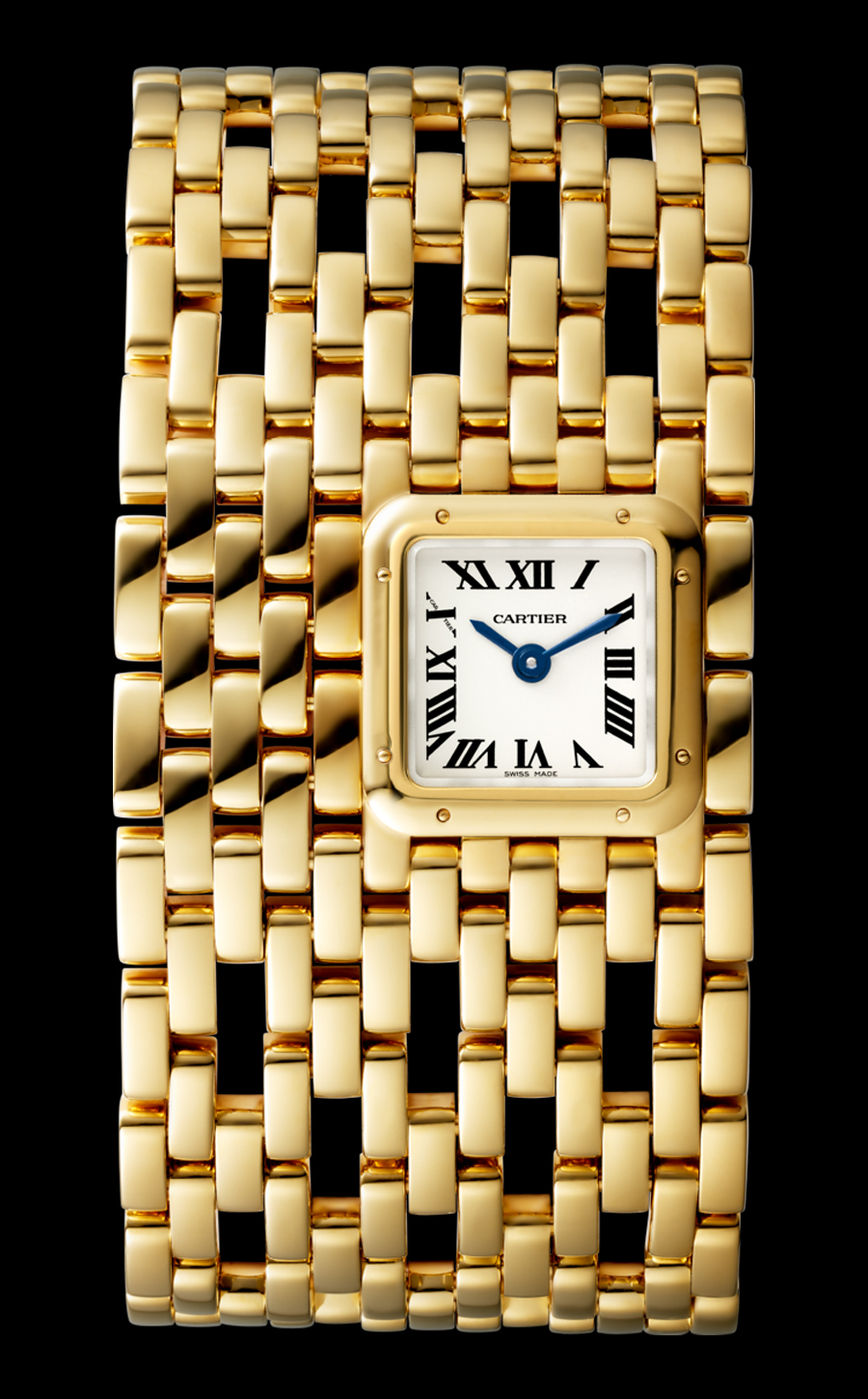
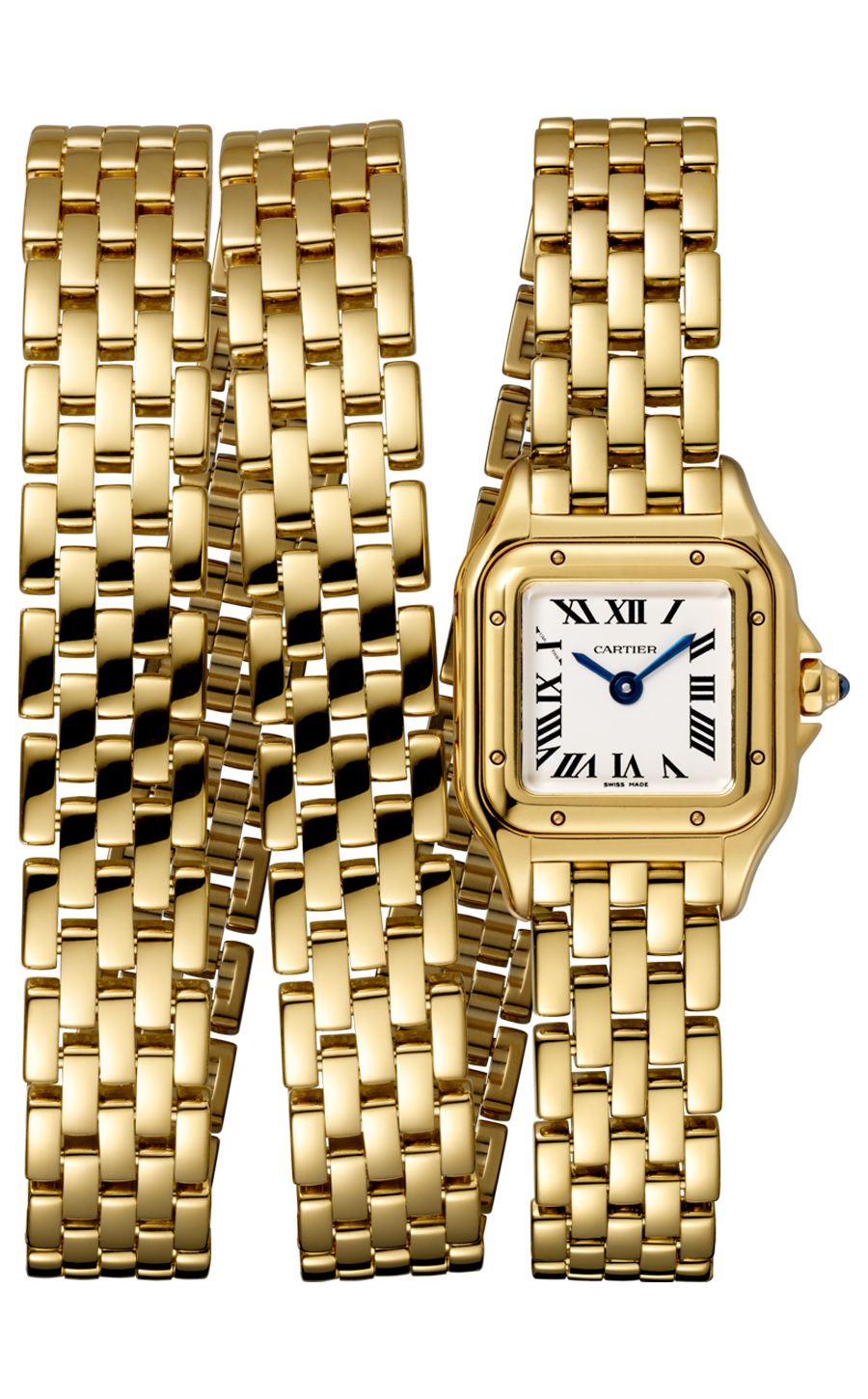
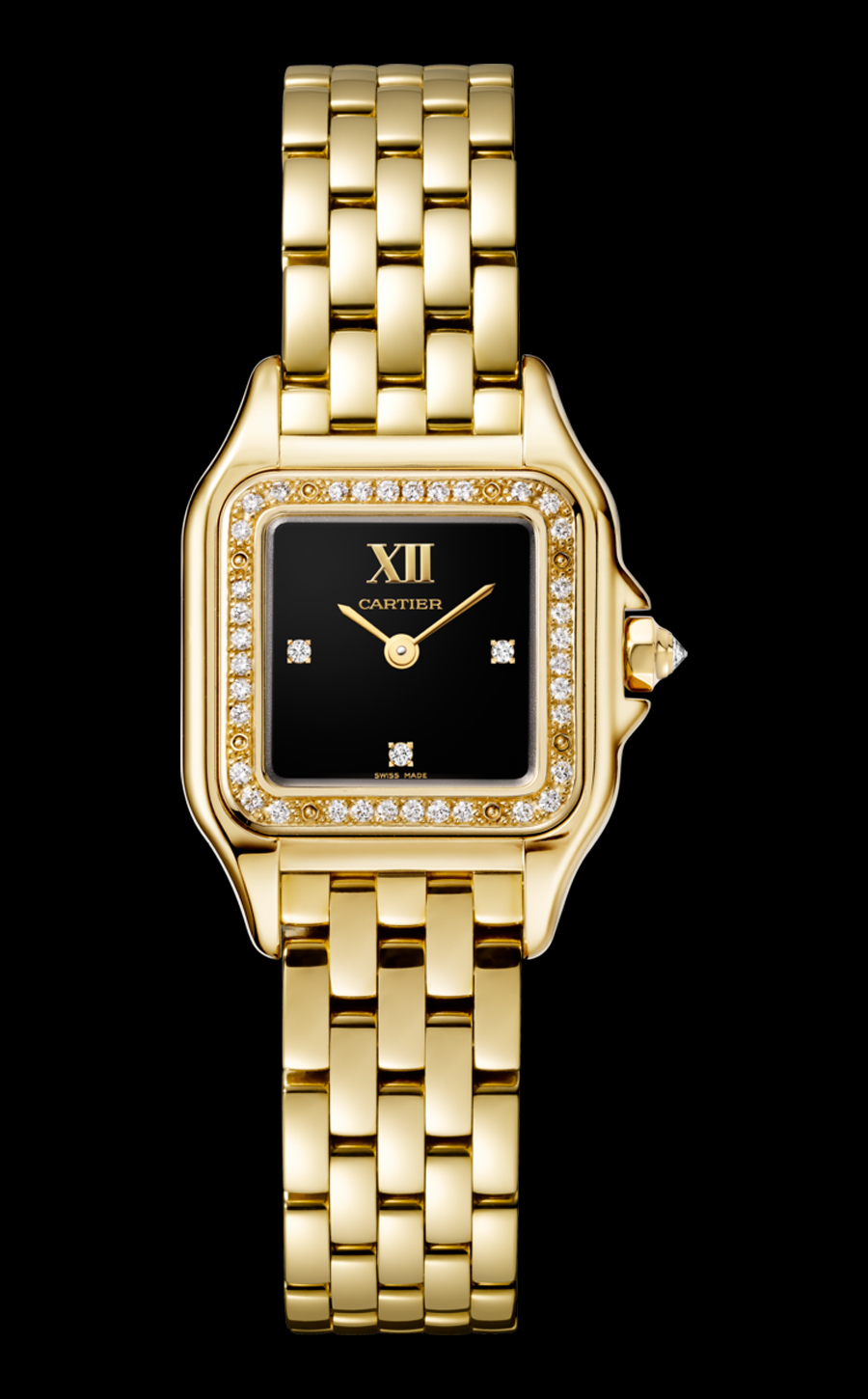
Panthère de Cartier watch, small model, triple loop bracelet, yellow gold, quartz movement (€42,900).
Panthère de Cartier watch, small model, yellow gold and diamonds, quartz movement (€30,000).
The following year (1984), the Panthère de Cartier watch was revisited this time with gold and stainless steel, and then in 1991, the fully clad in steel look came out. Cartier continued to come back to this iconic model over the years, reinventing it each time: mini version, pixel version, double loop bracelet, triple loop bracelet. This watch was a real sandbox for those working at the Cartier workshops. Once a design takes off, the possibilities are endless.
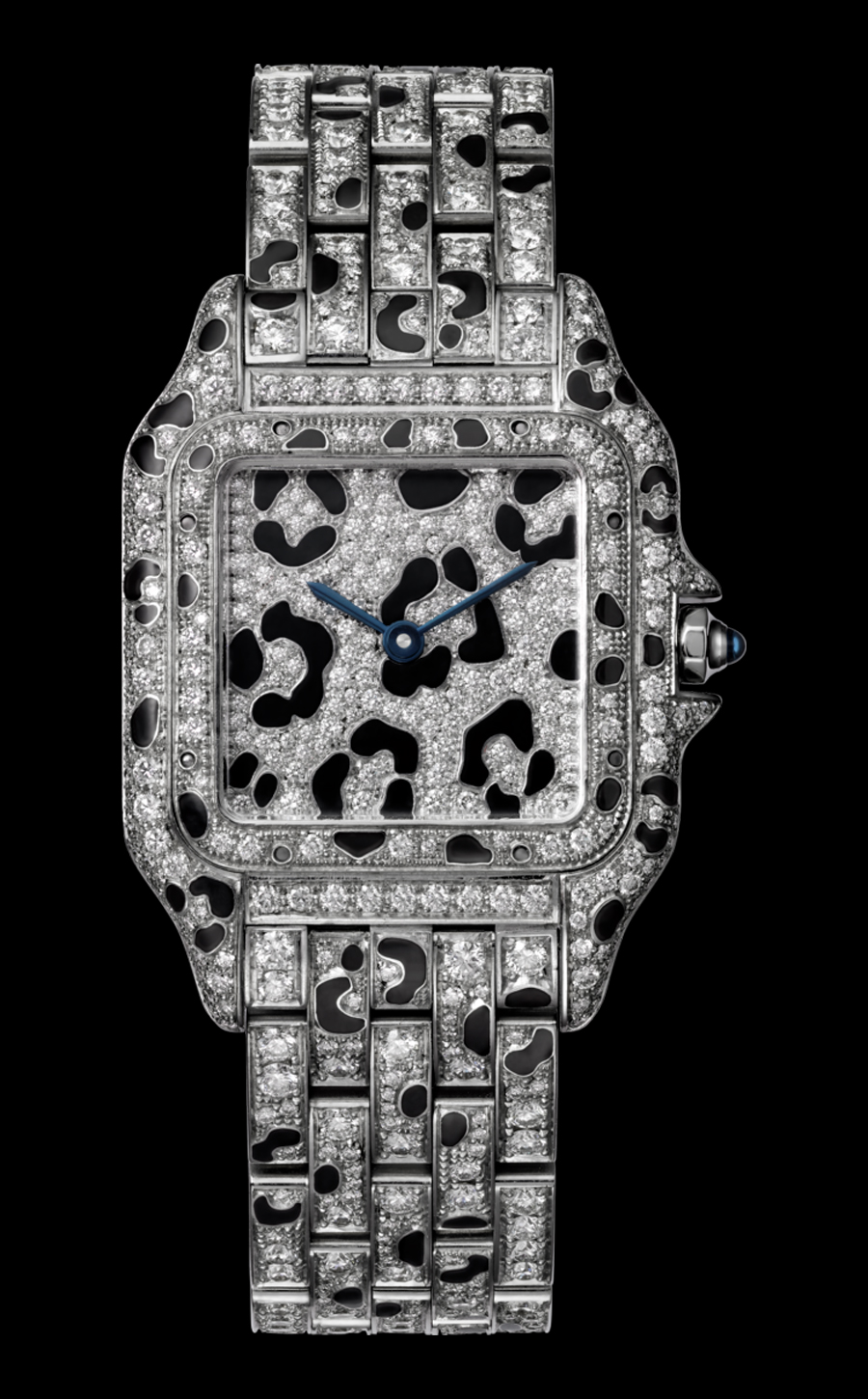
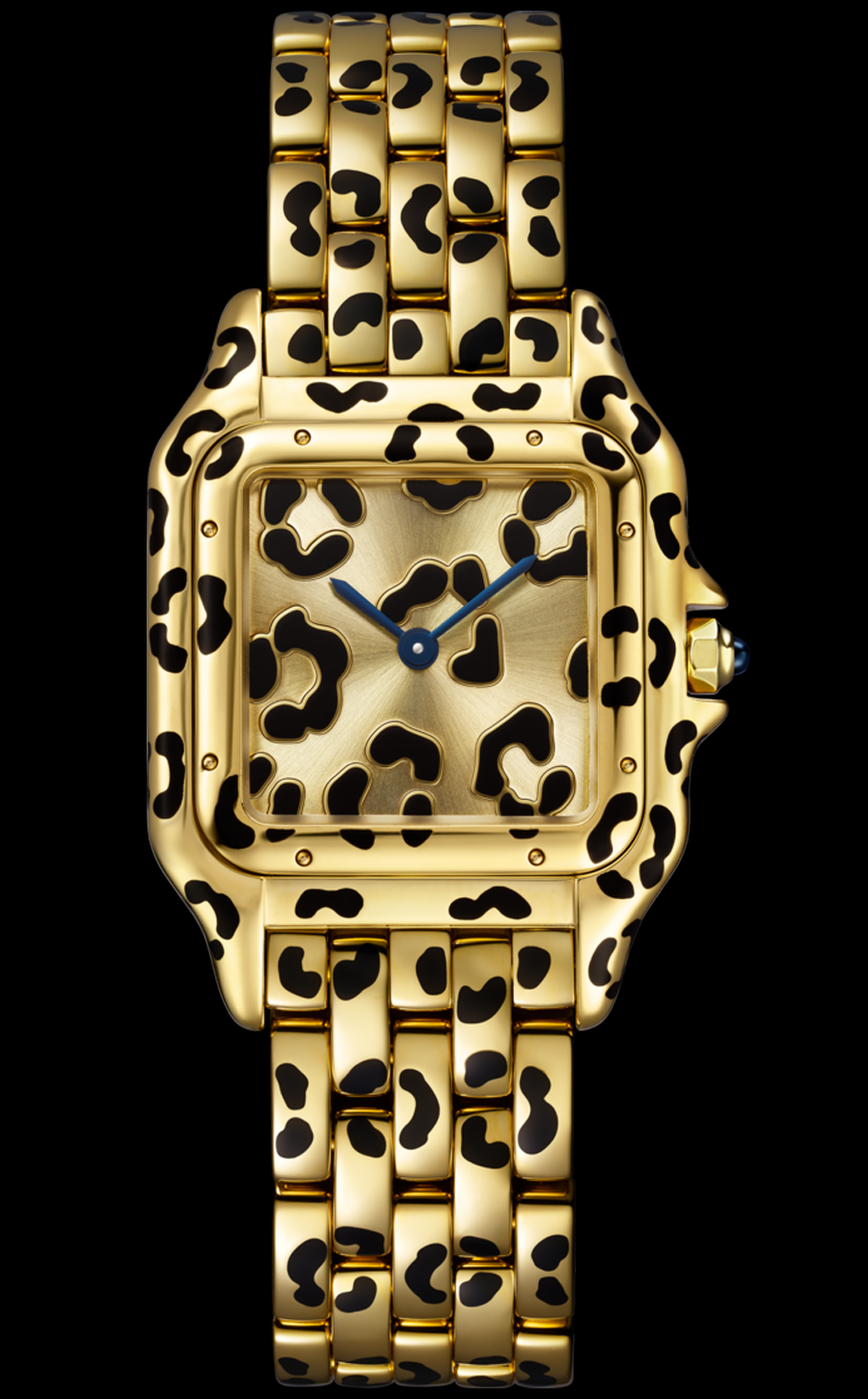
Panthère de Cartier watch, medium model, yellow gold (€32,200).
This progressive abstraction towards pure form also appears on the jewellery and accessories like this massive onyx ring, well suited for both for men and women. It evokes a reverse leopard with black fur and yellow spots, so glamorous!
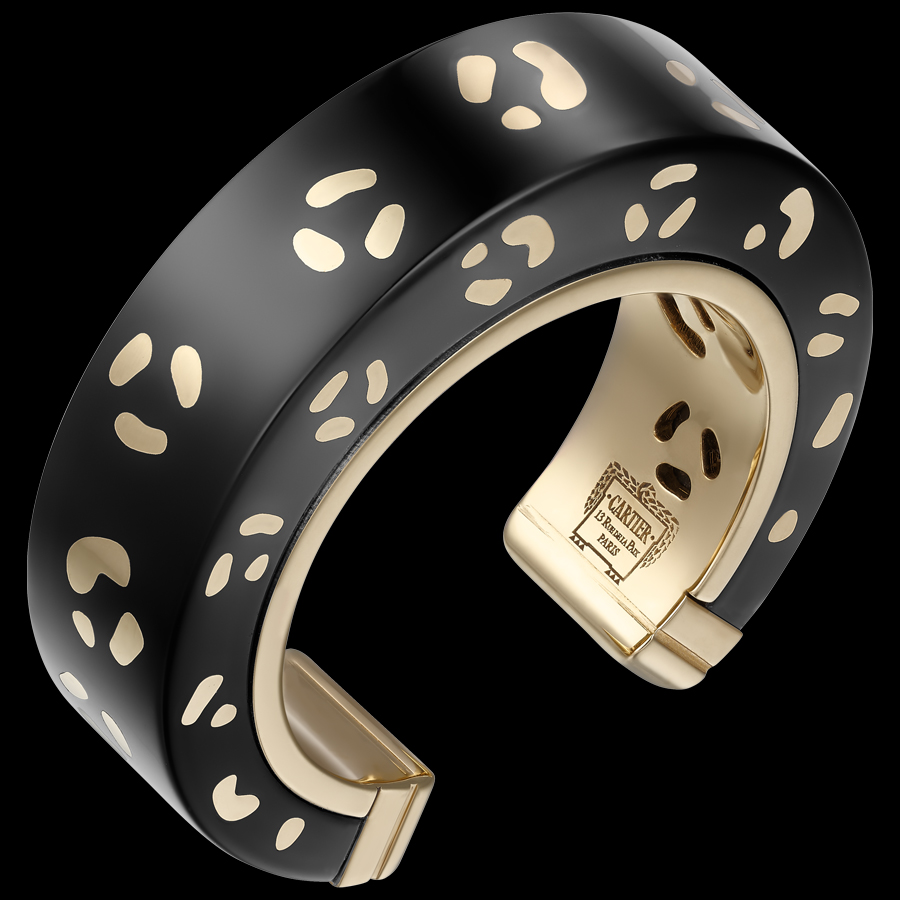
An integral part of men’s wardrobe Cartier since the very beginning, cufflinks are the epitome of French elegance. These essential accessories also adorn the chic pattern unique to the panther.
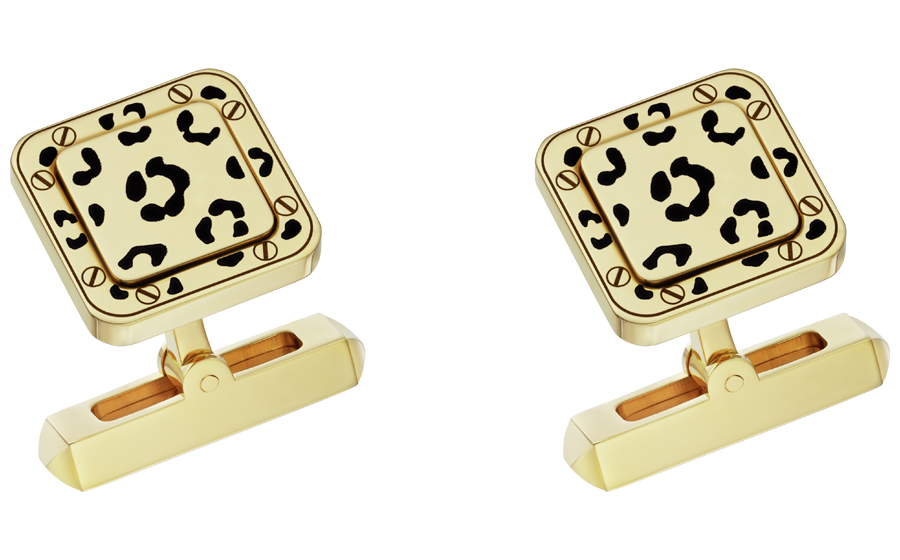
Pictorial Panther
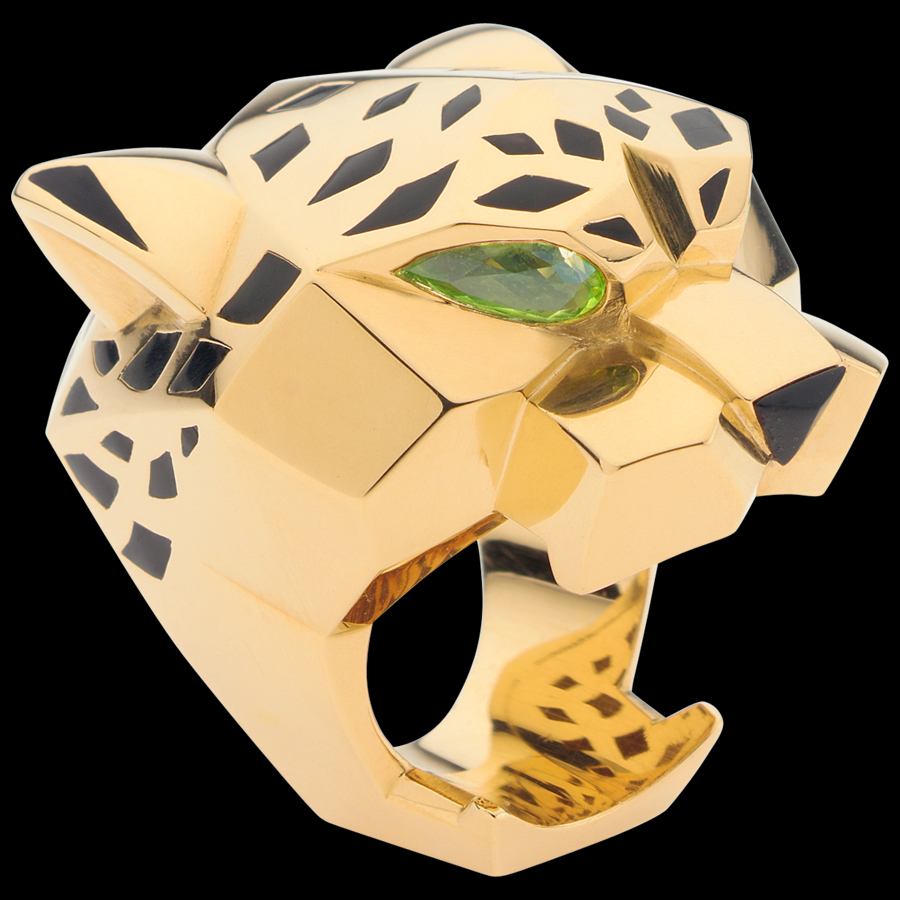
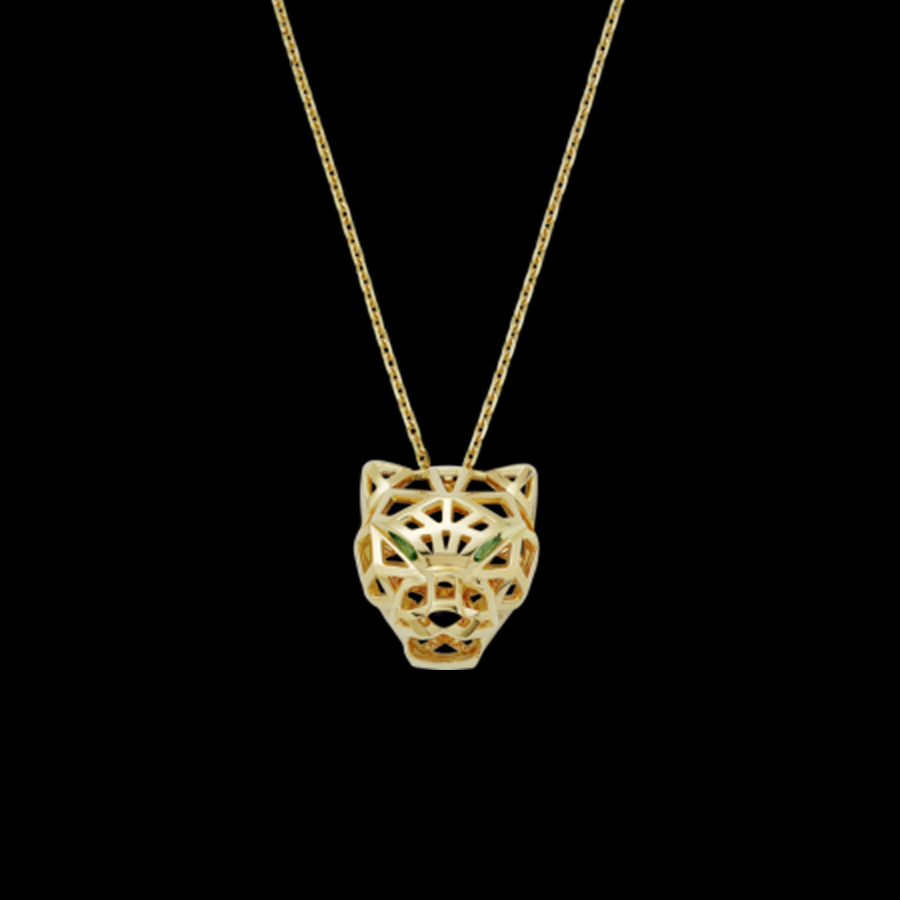
Panthère de Cartier necklace, yellow gold, set with tsavorite garnets and an onyx snout (€23,400).
Cartier’s leitmotiv could be resumed as “anything to please the Panthère”. Whether realistic or pictorial, the spry feline icon is constantly reinventing itself and never ceases to amaze. The panther catches our eye with its restless appearance and the great tension held within its physical form. Be it geometric or like brushstrokes, the Panthère always fills all three dimensions with it shapes: their snout, eyes, jowls, or their pointed ears. The pointed angles compliment the panther’s ferocity, making it seem even more wild and powerful. This is best exemplified by the remarkable bracelet in the jewellery edition of the Panthère de Cartier watch. Crafted by the creative studio and the workshop, this piece is perfectly articulated and designed to blend seamlessly with the wearer’s wrist.
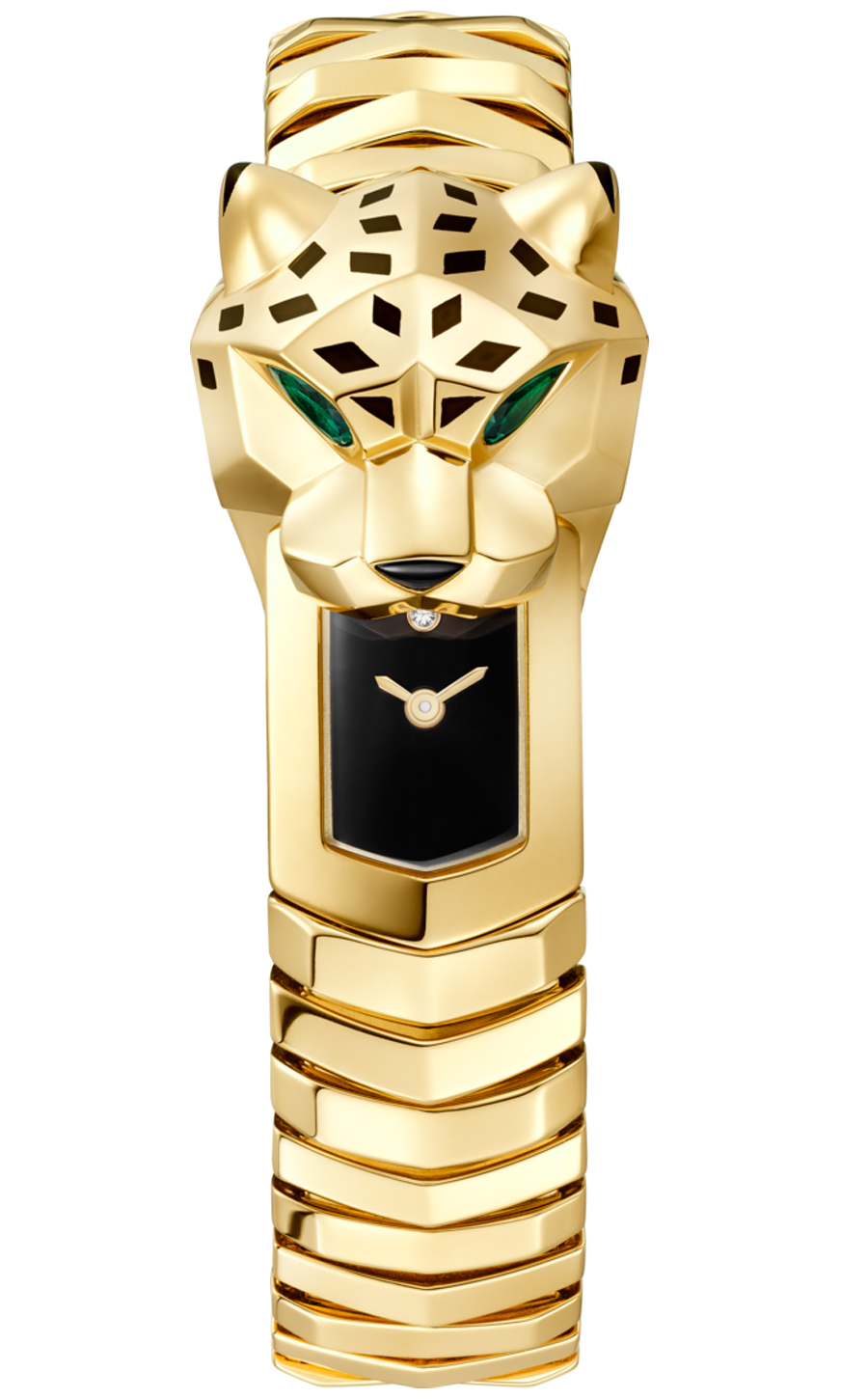
As techniques evolve, so too does the Panthère. In 2018, Cartier presented a new interpretation of the hourglass, magically transforming it into a panther’s head. We are simply under its spell: minuscule golden marbles flow like a mountain stream across the black lacquer dial to create an image of a panther’s head.
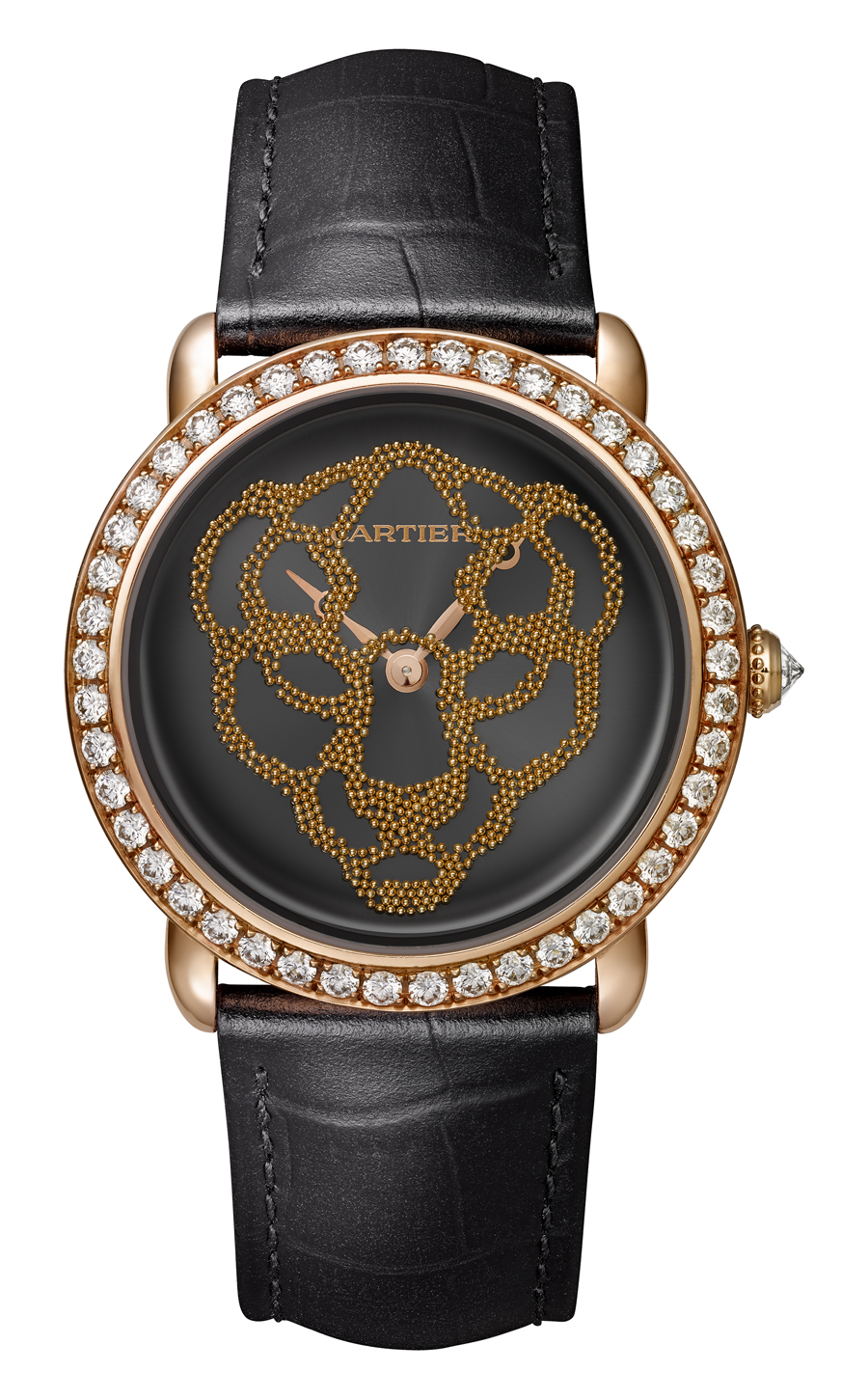
Showstopper
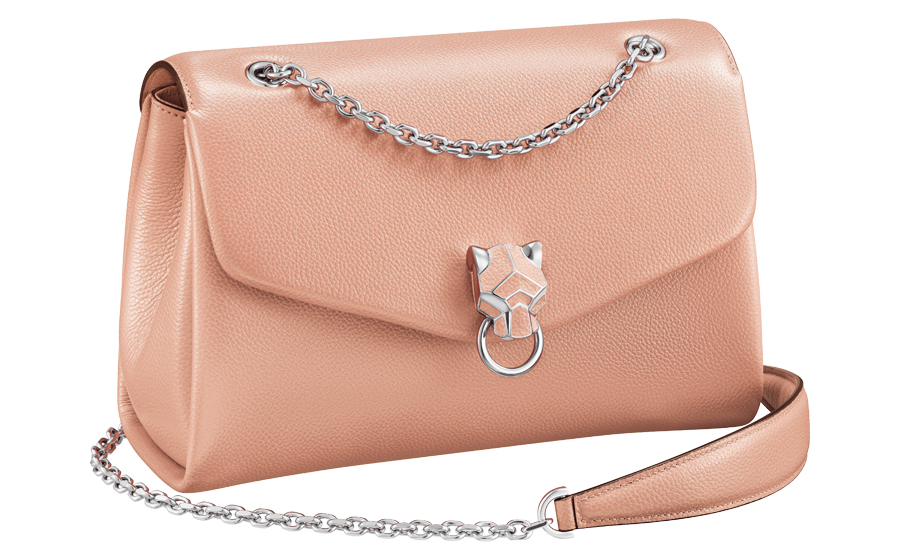
The Panthère makes another appearance in this Panthère de Cartier, small model, pink chain bag. The buckle is a supremely modern looking panther’s head, one of Cartier’s hallmarks. Don’t hesitate to wear it either over your shoulder or as a cross-body.
See also:
Read also: